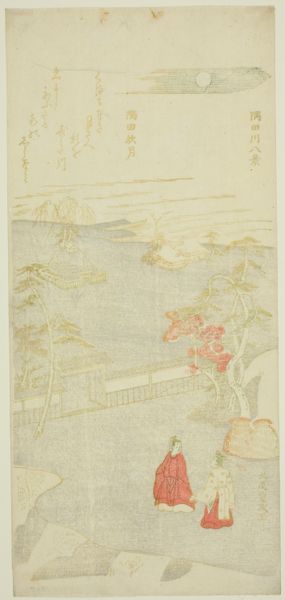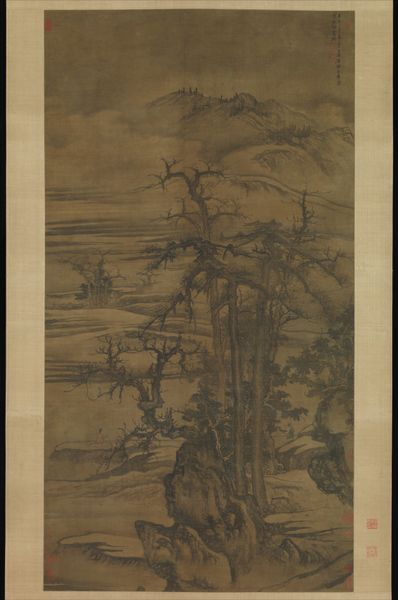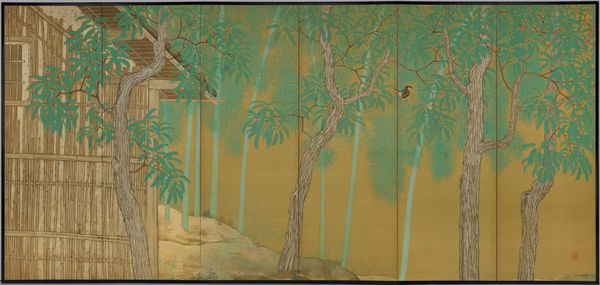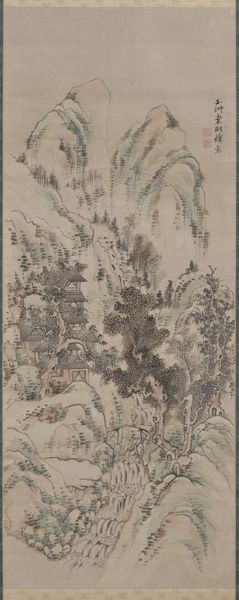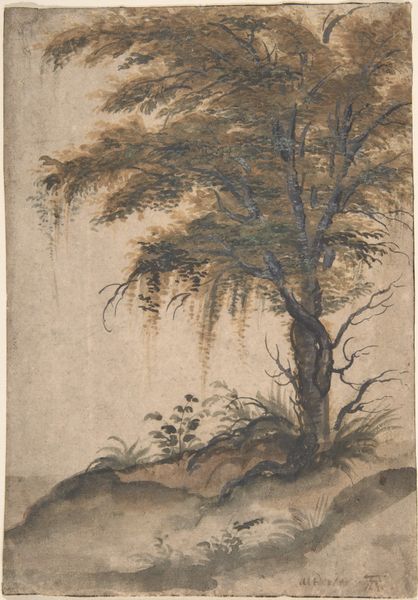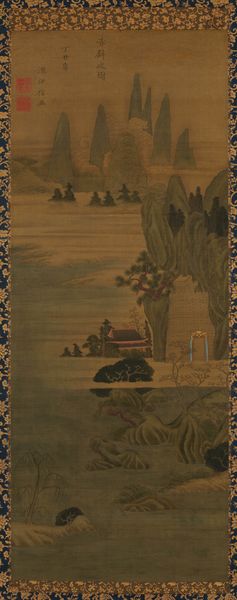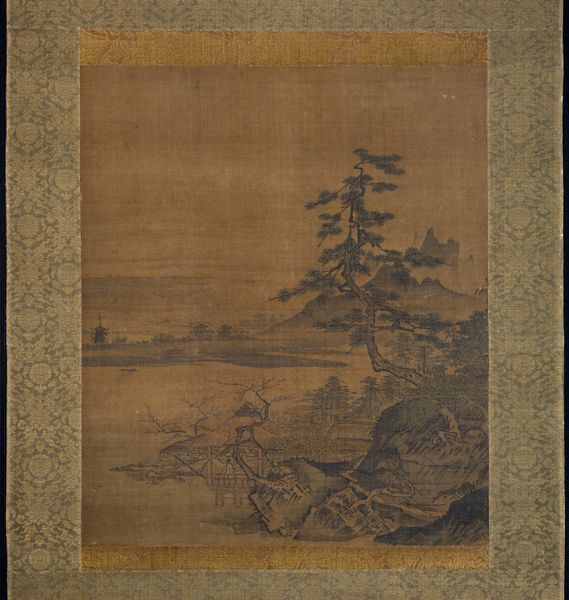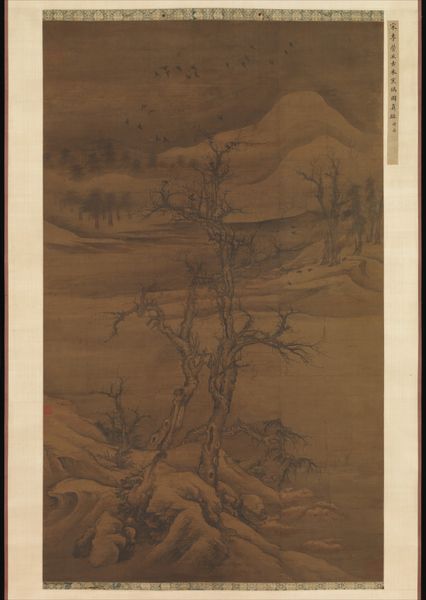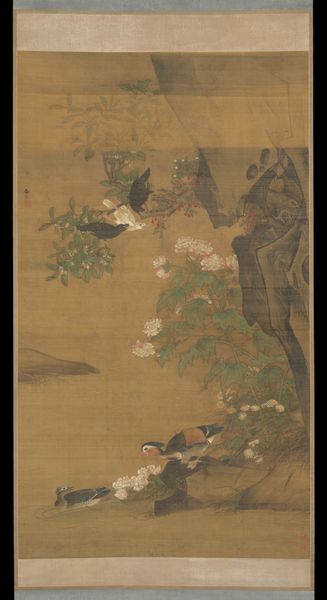
painting, watercolor
#
water colours
#
painting
#
asian-art
#
landscape
#
figuration
#
22_ming-dynasty-1368-1644
#
watercolor
#
realism
Dimensions: Image: 92 3/4 x 30 5/8 in. (235.6 x 77.8 cm) Overall with mounting: 126 5/8 x 34 5/8 in. (321.6 x 87.9 cm) Overall with rollers: 126 5/8 x 37 5/8 in. (321.6 x 95.6 cm)
Copyright: Public Domain
Curator: Chen Hongshou’s “Scholar-recluse in blue-green landscape,” created in 1633, is a remarkable example of Ming dynasty painting using watercolor. The location is currently at the Metropolitan Museum of Art. It’s a glimpse into the lifestyle and artistic sensibilities of that period. Editor: It has an immediate calming effect. It almost feels like a dreamscape. The colors, the slight blurring… I’m instantly transported. The lonely figure creates such stillness. Curator: Chen Hongshou's distinctive approach involved complex layering of materials to build form and depth, but always showing this unique and slightly abstracted perspective in portraying both scholar and landscape. We see realism blended with expression, revealing tension between observation and emotion during the late Ming dynasty. Editor: Absolutely. The colors are earthy, almost muted, which adds to that sense of introspective reverie, of solitude. The way the scholar seems almost camouflaged by the background says a lot. You know? As though he is just an ordinary man at peace. Curator: One interesting element for material analysis is to check how watercolors applied to silk reveal the integration of brushwork techniques with traditional paper art from that era, specifically in landscapes. This painting serves as an instance where literati ideals intersect with landscape traditions and its relationship with craftmanship, such as how pigments interact with fine silk textures, and the socioeconomic forces affecting artists and artwork circulation within China then. Editor: Thinking about those ancient pigments, how carefully they were sourced and ground… It makes me appreciate how deeply rooted this painting is in its time. The meticulous strokes of the brush remind us that we're peering through centuries, into a different mindset entirely. I wonder what secrets are kept there... Curator: Reflecting on the materials allows us to consider the broader production and commerce—from workshops creating brushes and colors to systems by which painters worked for themselves but also often, sometimes necessarily, created artwork for wealthier customers in Chinese society then. Editor: And, the lone scholar… he stands as a figure of contemplation. What more profound story does painting in watercolour allow an artist like Hongshou to speak? He wanted a world in nature! And, so… Curator: To really appreciate this period of art it's a challenge to deconstruct traditional separations and evaluate everything in relation to both society and cultural values throughout their processes together rather than individually - its complex and its why its captivating and amazing. Editor: Well, thank you, that context really brings this quiet masterpiece to life.
Comments
No comments
Be the first to comment and join the conversation on the ultimate creative platform.
